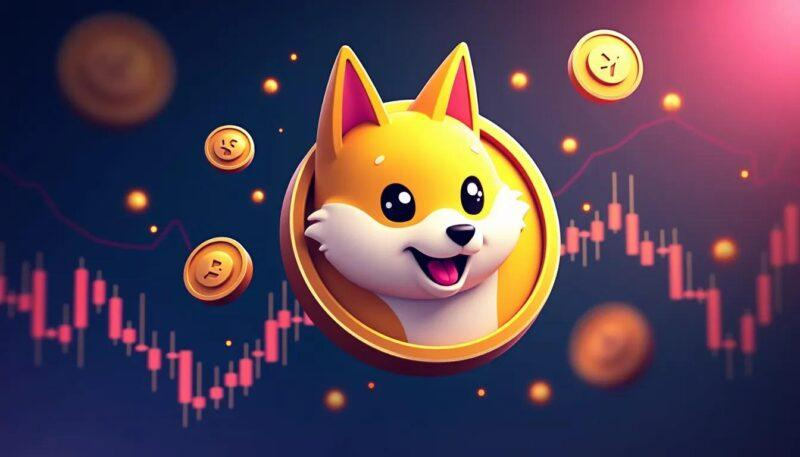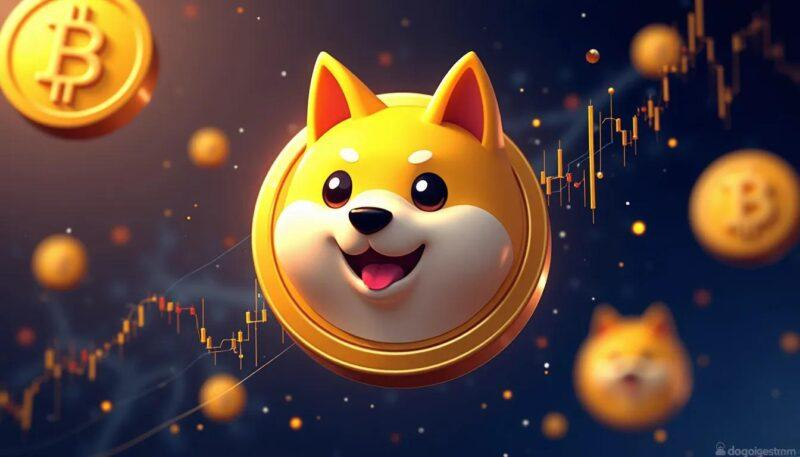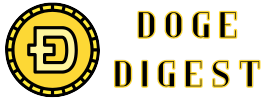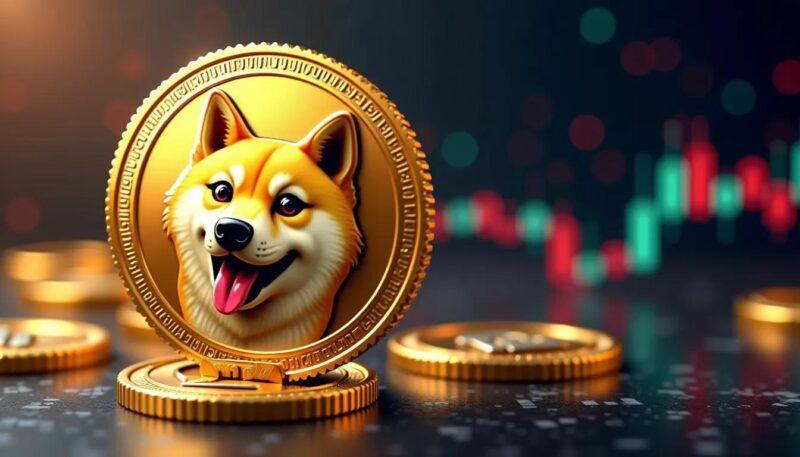In the ever-evolving world of cryptocurrencies, Dogecoin has captured the spotlight with its spirited community and meme-inspired origin. Yet, beyond the playful façade lies a practical aspect every trader must understand: the fees involved in exchanging Dogecoin. Whether you’re a seasoned crypto enthusiast or a curious newcomer, navigating these costs can be as puzzling as the coin’s rise to fame. This article sheds light on what to expect when exchanging Dogecoin, decoding the fees that quietly shape your transaction experience.
Understanding the Structure Behind Dogecoin Transaction Fees
Dogecoin transaction fees operate on a system designed to be lightweight and efficient, reflecting the network’s emphasis on fast and affordable transfers. Unlike Bitcoin or Ethereum, Dogecoin fees are notably low due to its faster block generation time-approximately 1 minute per block. This rapid throughput reduces network congestion and thus the associated transaction fees, making Dogecoin an attractive choice for microtransactions and tipping online.
The structure behind these fees is governed primarily by the concepts of input size and network demand. Fees are calculated based on the bytes of data the transaction occupies on the blockchain, meaning larger or more complex transactions require higher fees. However, since Dogecoin transactions are typically simpler, the fee remains minimal. Here’s a quick look at the factors influencing your fee:
- Transaction Size: The byte size impacts mining priority.
- Network Traffic: Higher demand leads to slightly increased fees.
- Block Reward Incentives: Fees reward miners, aligning with Dogecoin’s inflationary design.
| Factor | Impact on Fee | Typical Range |
|---|---|---|
| Transaction Size | Moderate | 1-3 DOGE cents |
| Network Traffic | Variable | 1-5 DOGE cents |
| Block Reward | Incentive | Included in fees |
Factors Influencing the Cost of Exchanging Dogecoin
The cost of exchanging Dogecoin is shaped by several dynamic factors that vary depending on the platform and market conditions. One of the most significant elements is the network transaction fee, which is paid to miners to validate and process your transaction on the Dogecoin blockchain. These fees can fluctuate based on the current demand and congestion within the network, sometimes spiking during periods of high activity.
Beyond blockchain costs, exchange service fees also contribute to the overall expense. These fees can be structured as fixed amounts, percentage-based commissions, or a combination of both, and they differ widely from one exchange to another. Additionally, the choice between centralized and decentralized platforms might influence fees; centralized platforms often offer faster trades but could charge higher commissions, whereas decentralized options typically boast lower fees but may involve other technical considerations.
| Fee Type | Description | Typical Range |
|---|---|---|
| Network Transaction Fee | Paid to miners to process transactions | 0.01 – 0.1 DOGE |
| Exchange Service Fee | Commission charged by the platform | 0.1% – 1.5% |
| Withdrawal Fee | Cost to transfer Dogecoin off the exchange | 0.1 – 1 DOGE |
Market volatility is another often overlooked factor that can indirectly influence transaction costs. When Dogecoin experiences high price swings, spreads-the difference between buy and sell prices-tend to widen, thereby increasing the cost to the user. This means that even if explicit fees stay constant, the effective price you pay or receive may vary significantly. Being aware of timing and choosing your moments wisely can help reduce the impact of these hidden costs.
- Network congestion can cause unpredictable fee spikes.
- Exchange reliability affects fees and processing speed.
- Market volatility alters spreads and effective pricing.
Comparing Fees Across Popular Dogecoin Exchanges
When diving into Dogecoin trading, fees can vary dramatically depending on the exchange you choose. Some platforms emphasize low trading fees but add higher withdrawal costs, while others keep withdrawal fees minimal but compensate with steeper trading rates. Understanding these subtle distinctions can save you a decent chunk of your investment over time.
Consider the fee models of these popular exchanges:
- Binance: Offers one of the lowest trading fees at 0.1%, which can drop further with BNB token usage. Withdrawal fees are competitive, though they fluctuate based on blockchain congestion.
- Coinbase Pro: Focuses on a tiered fee structure ranging from 0.04% to 0.50%, with slightly higher withdrawal fees compared to other major players.
- Kraken: Implements a straightforward fee schedule, generally around 0.16% for makers and 0.26% for takers, combined with moderate withdrawal charges.
| Exchange | Trading Fee | Withdrawal Fee (DOGE) |
|---|---|---|
| Binance | 0.1% (discount available) | 1 DOGE |
| Coinbase Pro | 0.04% – 0.50% | 2 DOGE |
| Kraken | 0.16% / 0.26% | 1.5 DOGE |
Strategies to Minimize Fees When Trading Dogecoin
Navigating the world of Dogecoin trading doesn’t have to come with steep fees cutting into your profits. One savvy approach is to choose exchanges with transparent and low-cost fee structures. Many platforms offer tiered fees based on your monthly trading volume, which can significantly reduce costs if you plan to trade regularly. Additionally, consider exchanges that provide fee discounts for using their native tokens or loyalty programs-this can shave off a noticeable percentage from your transaction fees.
Timing your trades can also influence the fees you incur. Network congestion plays a big role in transaction fees, especially on blockchain networks. By scheduling Dogecoin exchanges during off-peak hours when the network is less busy, you may enjoy lower miner fees. Keep an eye on real-time fee estimators or exchange dashboards-this proactive approach helps avoid overpaying for quick transactions.
Finally, exploring alternative methods for exchanging Dogecoin can be a game changer:
- P2P Trading: Peer-to-peer exchanges often feature negotiable fees and allow you to connect directly with buyers or sellers.
- Using Limit Orders: Instead of market orders, limit orders can help you avoid higher fees linked with fast execution.
- Batch Transactions: If you’re moving multiple coins, batching them into a single transfer can trim down network fees.
| Strategy | Potential Savings | Best For |
|---|---|---|
| Trading on Low-Fee Exchanges | Up to 50% off standard fees | Regular traders |
| Timing Trades Off-Peak | Variable, depending on network traffic | Flexible traders |
| Peer-to-Peer Marketplaces | Negotiable fees | Experienced traders |
Evaluating Fee Transparency and Hidden Costs in Dogecoin Platforms
When diving into Dogecoin exchanges, understanding the fee structure is crucial to avoid surprises. Many platforms advertise low trading fees but subtly offset costs through other mechanisms. Commonly, you’ll encounter charges such as withdrawal fees, network fees, and conversion markups that aren’t always clearly disclosed upfront. Being vigilant about these ancillary costs can save you both money and frustration.
Hidden fees often lurk in unexpected places, including:
- Deposit fees depending on your payment method
- Currency conversion margins charged during fiat-to-Dogecoin exchanges
- Premium pricing during high network congestion periods
- Minimum withdrawal limits triggering additional charges
To better visualize potential costs, here’s a quick snapshot of how fees might stack up on different types of Dogecoin platforms:
| Platform Type | Trading Fee | Withdrawal Fee | Conversion Markup |
|---|---|---|---|
| Centralized Exchanges | 0.1% – 0.5% | 0.001 – 0.01 DOGE | 0.5% – 1.0% |
| Decentralized Platforms | Variable (often zero) | Network Gas Fees | Minimal to None |
| P2P Marketplaces | Negotiated | Depends on Payment Method | Variable |
Q&A
Q&A: Decoding Dogecoin Fees – What to Expect When You Exchange
Q1: What exactly are Dogecoin fees?
A1: Dogecoin fees refer to the transaction costs incurred when sending or exchanging Dogecoin (DOGE). These fees compensate miners who validate and record transactions on the blockchain, ensuring security and proper function of the network.
Q2: How are Dogecoin fees determined?
A2: Unlike some cryptocurrencies with variable fees, Dogecoin’s fees tend to be relatively low and stable because it uses a proof-of-work system with a higher block size and quicker block times. The fee depends on network congestion, transaction size (in bytes), and the speed at which you want your transaction confirmed.
Q3: Are Dogecoin fees higher or lower compared to other cryptocurrencies?
A3: Generally, Dogecoin fees are lower than those of many popular cryptocurrencies like Bitcoin or Ethereum. Its design-faster blocks and a more abundant supply-helps keep transaction costs minimal, making it an attractive option for small or frequent transfers.
Q4: What fees should I expect when exchanging Dogecoin on an exchange?
A4: When exchanging Dogecoin on cryptocurrency platforms, you may encounter two types of fees: network fees and platform fees. Network fees are the blockchain transaction costs paid to miners, while platform fees are service charges imposed by the exchange. Platform fees vary widely depending on the exchange’s policies.
Q5: Can Dogecoin fees fluctuate significantly?
A5: While Dogecoin fees are generally low and stable, they can experience spikes during periods of high network activity. However, these fluctuations are usually less dramatic than those seen in other cryptocurrencies, thanks to Dogecoin’s efficient network design.
Q6: How can I reduce Dogecoin fees when making transactions?
A6: To minimize fees, you can try sending transactions during off-peak hours when the network is less congested, or use wallet settings that allow you to choose slower confirmation speeds with lower fees. Additionally, choosing exchanges with transparent and competitive fee structures helps reduce overall costs.
Q7: Do Dogecoin fees impact small transactions?
A7: Because Dogecoin’s fees are low, they typically don’t eat into the value of small transactions as heavily as fees do on other blockchains. This makes Dogecoin particularly popular for tipping, microtransactions, and remittances where every dollar counts.
Q8: Is there a fixed fee amount for Dogecoin transactions?
A8: No, fees are not fixed but flexible. They are calculated based on the data size of the transaction and the current state of the network. However, the amounts tend to remain modest compared to many other cryptocurrencies.
Q9: Should I always pay the minimum fee for faster confirmations?
A9: Not necessarily. While paying higher fees generally speeds up confirmation times, Dogecoin’s network is typically quick enough that even minimum fees result in timely confirmations. Evaluating the urgency of your transaction will help determine the appropriate fee.
Q10: Where can I check current Dogecoin fees?
A10: You can monitor live Dogecoin fee estimates on various blockchain explorers and cryptocurrency analytics websites. Many wallets and exchanges also provide fee suggestions based on current network conditions, helping you make informed decisions.
Navigating Dogecoin fees might seem like decoding a secret message, but once you understand how they work, exchanging DOGE becomes straightforward. With low costs and fast transactions, Dogecoin continues to charm crypto enthusiasts looking for affordable and speedy exchanges.
In Retrospect
Navigating the world of Dogecoin fees might seem like decoding a playful puzzle, but understanding what influences these costs can make your exchanges smoother and more predictable. Whether you’re a casual trader or a dedicated doge enthusiast, keeping an eye on network conditions and exchange policies helps you avoid surprises and make informed decisions. So next time you swap those cheerful coins, you’ll know exactly what to expect-turning the mystery of Dogecoin fees into a straightforward part of your crypto journey.




